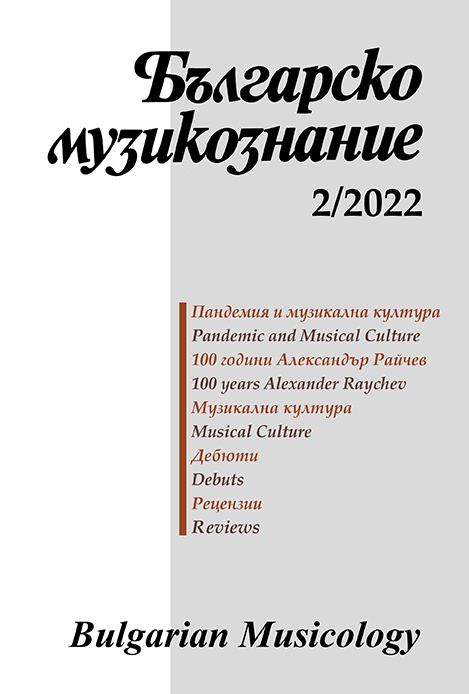Професионалистите и свързаната с фолклора музикална самодейност между 1954 и 1960 година
Professionals and Folklore-related Amateur Music Activities Between 1954 and 1960
Author(s): Goritza NaydenovaSubject(s): Fine Arts / Performing Arts, Music
Published by: Институт за изследване на изкуствата, Българска академия на науките
Keywords: amateur art activities; folk music; Peoples’ Art Central House professionalism; composers
Summary/Abstract: After the introduction of the topic in a previous paper (“Interactions Between the Fields of Amateur Music Activities and Professional Musicians Between the Autumn of 1954 and 1960” [Найденова / Naydenova, 2019а]), i.e. a context of interaction between the social fields of professional performers (according to Bourdieu) and amateur music activities as a whole, the current paper focuses on those contact points in the field of amateur music that are related to folklore. The period under consideration covers the years of establishing the People’s Art Central House (PACH as an independent institution governing amateur art activities) and the emergence of the earliest folk fairs (marking a new stage in addressing folklore on a broad scale). In those years, PACH embraced the trend of “Obrabotka” (a specific form of a composer’s professional work targeted at a stage, and more specifically media representation of folklore in Bulgaria), first promoted by the then newly founded National Ensemble for Folk Songs and Dances. This set up the specifics of the “professional-amateur” relationship in two main aspects: 1) the participation of composers in relation to providing a repertoire and 2) the participation of professional performers with a view to improving performance skills. On the one hand, this trend has articulated an endeavour towards closeness with traditional rural music. On the other, the notion of Europeanizing and civilizing the people and their folklore (which amounts to preparing a stage variant according to the west European music art model) is still strong. In discussions and comments, the music community’s expectation that the new trend of “reworked” folklore should be included in Bulgarian musical culture, as it is at the present moment, becomes evident. The constantly expanding range of this movement, however (of necessity and because of “the resistance of the material” – both human and music-related), claims its own space. In the rest of the amateur music sectors (choral work, symphony orchestras, and operetta ensembles) the training of musical directors or participants ultimately aims to achieve such a degree of inclusion in professional music life (of both performers and audiences) that could make them an integral part of it. With the “folkloric” ensembles the questions of required training, right developmental direction and appropriacy remain open, because the professionals expected to train amateurs are still immersed in the empiricism of creation. On the other hand, the powerful institutional and administrative support pushes the whole trend in the direction of “receiving fees on a professional basis” before the level of “professional knowledge” has been achieved. This becomes yet another reason for the delineation of the always denied but visible divide between the two types of amateur music activities as well as between the two social spheres in our musical culture as a whole.
Journal: Българско музикознание
- Issue Year: 2022
- Issue No: 2
- Page Range: 40-59
- Page Count: 20
- Language: Bulgarian
- Content File-PDF

